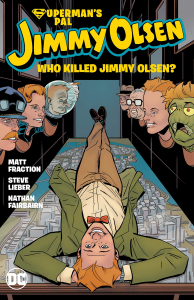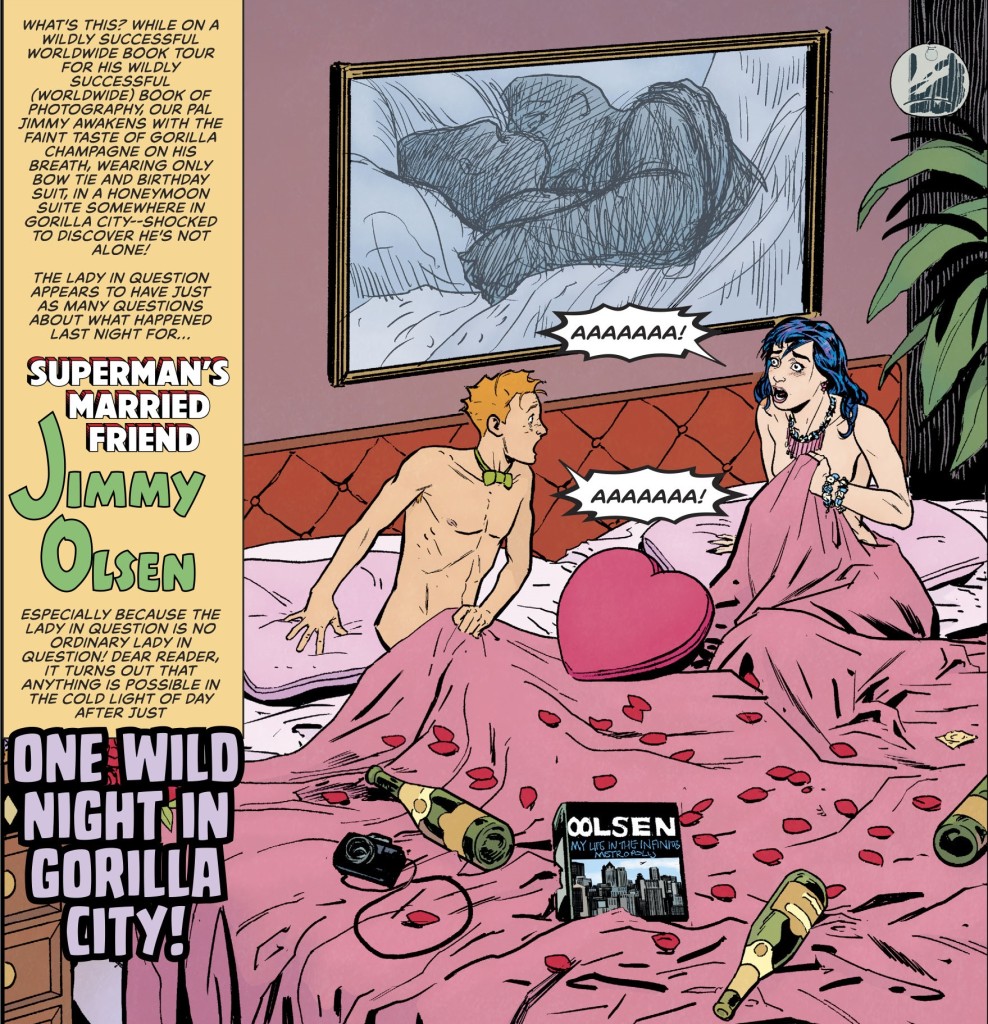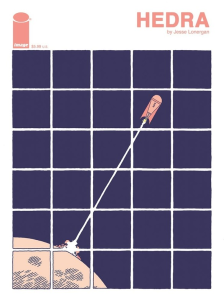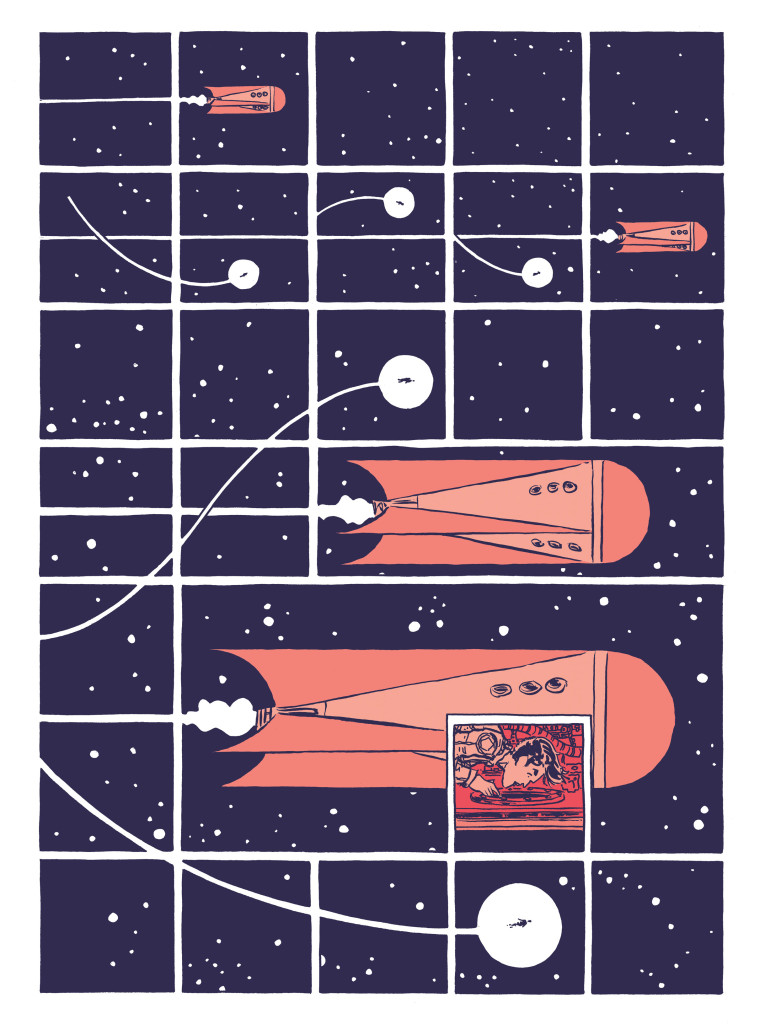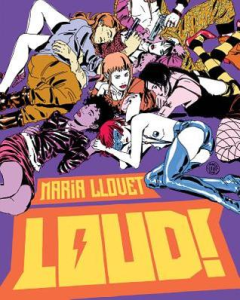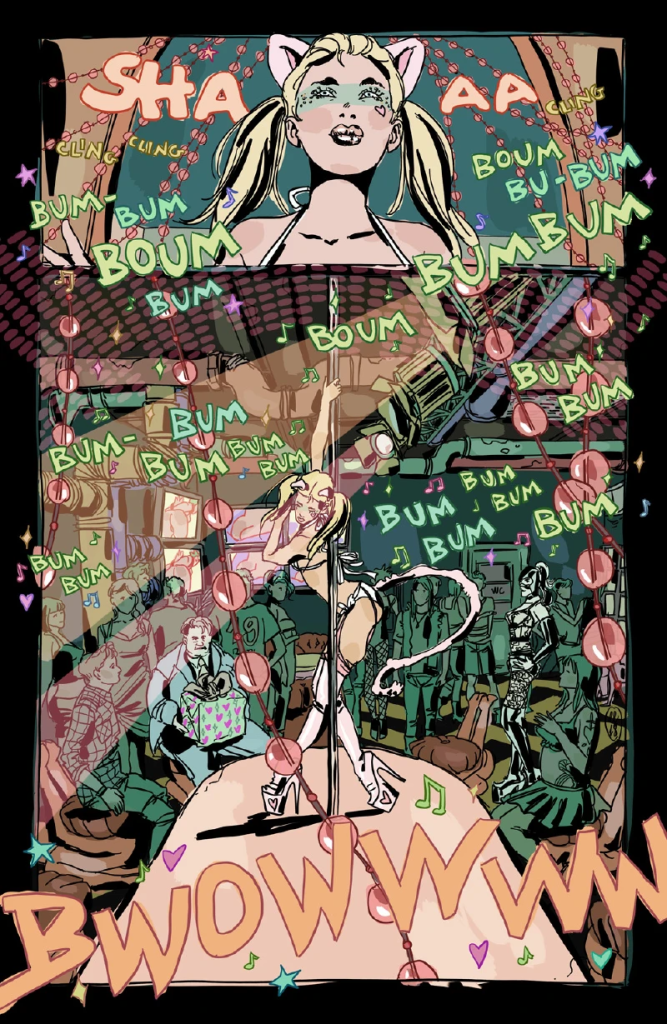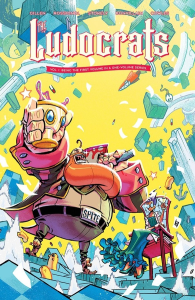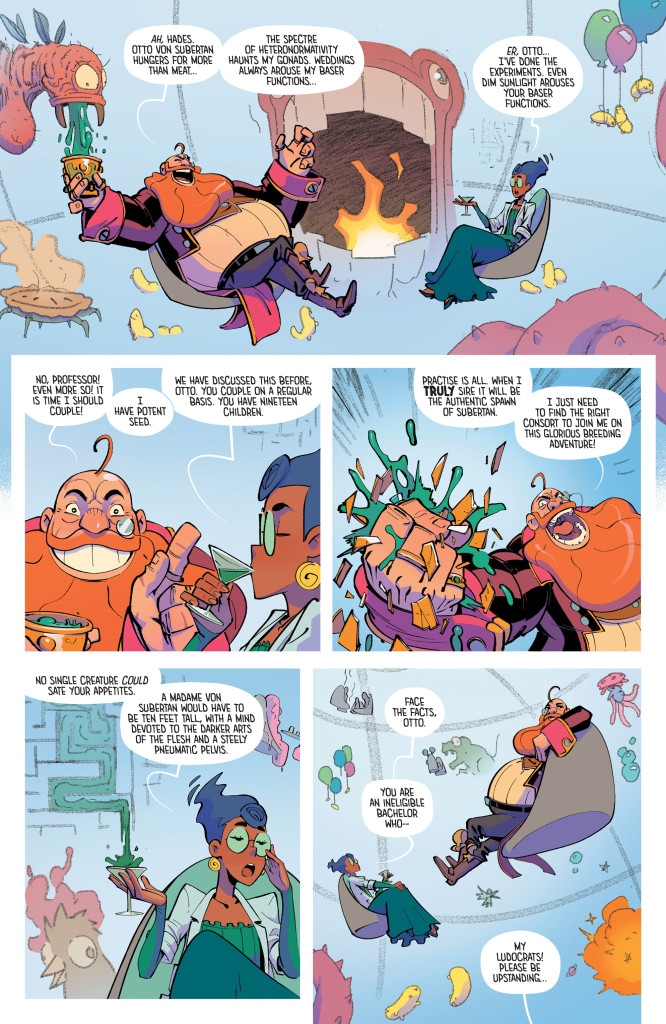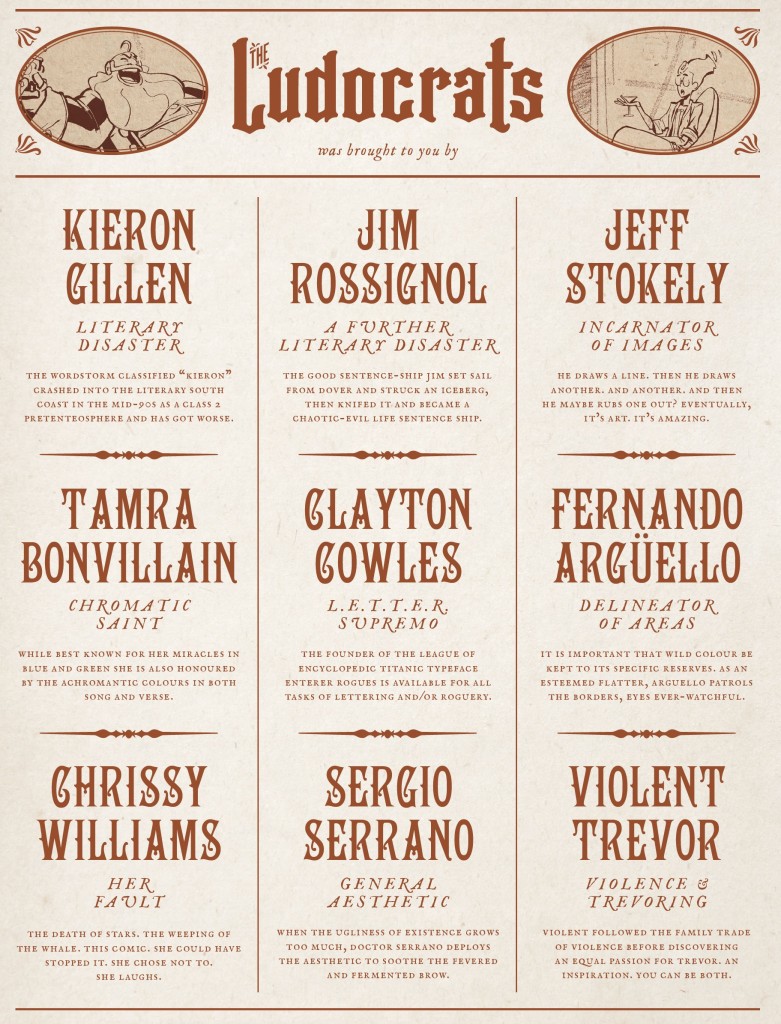If you read last weeks’ posts, you know what’s going on. Here are Gotham Calling’s top four books of 2020:
4. WHO KILLED JIMMY OLSEN?
The original Superman’s Pal Jimmy Olsen series (1954-1974), about the wacky misadventures of the eponymous Daily Planet photographer/columnist, has become an emblem of Silver Age comics, with its parade of surreal mutations, berserk science fiction, psychedelic visuals, and convoluted twists forcing characters into the most surprising behavior (thus justifying the typically shocking covers) – and that was even before Jack Kirby joined the title and took it to new degrees of folly! It’s the sort of material that was bound to be reimagined in the current era of superhero ‘reconstructionism,’ where the most colorful, fantastic elements of old are no longer just a source of embarrassment, but something to be celebrated and, ideally, injected with new life (sure enough, both Grant Morrison and Nick Spencer wrote cool, if brief, tributes to the series in 2006’s All-Star Superman and in 2010’s Action Comics). The recent 12-part series collected as Who Killed Jimmy Olsen? (together with a section from the Superman: Leviathan Rising special) recreates the original’s anything-goes spirit while updating it to the age of click-baiting, vlogs, and social media, as Jimmy Olsen finds himself trying to investigate a conspiracy against him while simultaneously feeding an online fanbase with silly stunts and cranks.
Manic and hilarious, the book derives much of its charm from Jimmy’s defiantly cheerful attitude, but it also makes the most out of DC’s shared universe, much like Deadpool does with Marvel. Rather than getting bogged down in continuity, Who Killed Jimmy Olsen? will delight knowledgeable fans who spot geeky references, like the theme park devoted to the Bottle City of Kandor or the extended parody of ‘Reign of the Supermen…’ Above all, though, it uses the DCU as a chance to play with a variety of concepts that shouldn’t fit together, but which do so quite neatly for comedic purposes. This is a magical world where anything can happen, from a dinosaur mayor to an interdimensional jewel thief!
(There are also tons of jokes involving Batman, which of course is right up my alley…)
Matt Fraction brings in his A-game, which isn’t always the case when he’s writing for the Big Two (for once, his indie work feels less inspired… although not without a certain charm, so far his latest series, Adventureman, is way too derivative for my taste). Not only does Jimmy Olsen deliver a barrage of gags worthy of Harvey Kurtzman, but it tells the story out of sequence, in short segments, cleverly crafting an elaborate narrative that’s like a jigsaw puzzle, so that part of the joy is watching the pieces gradually fall into place.
Fraction’s fusion of Silver Age-like imagination with the slickness of modern storytelling is beautifully pulled off by artist Steve Lieber, who knows just when to keep a straight tone (so that the amusement derives from contrast) and when to go into all-out caricature (like the Peanuts pastiche in the flashbacks of Jimmy’s childhood). The same goes for colorist Nathan Fairbairn, whose lively palette reinforces the comic’s madcap energy, and letterer extraordinaire Clayton Cowles, whose work shines especially in the over-the-top, tongue-in-cheek title boxes that introduce each segment.
3. HEDRA
Jesse Lonergan’s wordless one-shot Hedra is all about the trip, not the destination. I don’t mean the exploration trip that takes its protagonist into space, away from a devastated Earth, so much as the trip of engaging with each of Lonergan’s intricately constructed layouts. A relatively simple – if wide in scale – story told through complex visuals, Hedra conveys information through symbols and thoughtful composition while cramming panels by the dozens, whether to generate claustrophobia or to ramp up the illusion of movement.
Everything in this gem seems carefully crafted, from the temperature evoked by each color choice to the design of every single image and how it affects the trajectory of the reading process. Yet there is also something whimsical about the disorienting way Hedra plays with the structure of the comic book page and with the medium-specific possibilities of sequential art. This is what makes it a ‘top 3’ comic: by this stage of the countdown, I’m privileging the stuff that most surprised me last year. As much as I dug classically constructed genre pieces like Fantastic Four: Antithesis (in which talented veterans of the field drew on decades of experience to deliver a perfectly satisfying sci-fi fantasy yarn), reading Hedra was ultimately more memorable and riveting.
Just look, in the scan below, at how the rocket and the tiny figure (soon revealed to be a flying robot) dance across the gutters – and the way the gutters merge with their propulsion lines – making you squint and then widen your vision as they rhythmically guide your eyes along the page:
Yes, this smacks of formalism and cold narrative exercise, perhaps first coming across as a mere vehicle to show off Jesse Lonergan’s artistry. Yet the execution is so exquisite that it does achieve a kind of touching, invigorating transcendence. Hedra is not a work you enjoy by merely appreciating its technique. The cosmic payoff has a genuinely lyrical resonance and the action is damn exciting – hell, watching an astronaut and a magical robot battle a horde of aliens is pretty much the definition of pulpy fun!
(Lonergan’s other 2020 space-based one-shot, Paradise Planet, is also worth checking out – although a much less impressive achievement than Hedra, it compensates by providing more than its fair share of chuckles…)
2. LOUD!
With its quasi-dialogue-free antics and virtuoso storytelling, LOUD! could almost be compared to Hedra, even if its command of comic book language involves less formal experimentation than Jesse Lonergan’s intergalactic odyssey. Yet LOUD! gets extra points because of its freewheeling grindhouse vibe and more relatable characters. This is one punk-rock comic whose blistering artwork and broken people struck a chord with me. Or maybe it was just confinement fatigue making me nostalgic for crowds and stories about human contact…
Set during a chaotic night at a music bar / strip club, with an ensemble cast and a kaleidoscopic framework, the driving force of Maria Llovet’s graphic novel is that specific club environment in which the sound coming out of the speakers makes lengthy conversations impossible, so communication tends to move beyond words, prioritizing exchanged looks and gestures. Not that LOUD! is exactly wordless – it’s chockfull of huge sound effects! – but it trades on a similar sort of visual emphasis. Moreover, by forgoing color finesse in the name of gutsy choices and pounding contrasts, Llovet captures the disco-induced mental confusion that comes with sensory overload.
The fact that the book is called LOUD! despite being mostly a ‘silent’ comic appears to be a wink at how silly this term is… Not so much because comics are always technically silent, but because they seldom are – bright colors, busy details, and a forceful sense of motion all create constant noise in my head while I’m reading (not to mention the fact that the best artists can project music with their drawings in ways that truly reverberate, like Jason Lutes in Berlin or David Lapham in Murder Me Dead). Of course, Maria Llovet takes this ability especially far in LOUD! through garish pigments, jam-packed images, and a roving ‘camera’ that rarely slows down. And if her transitions and mise-en-scène aren’t always immediately comprehensible, that only brings us closer to the characters’ perspectives, distorted as they are by drugs, alcohol, and trauma (it also invites you to reread the book, picking up new stuff the more familiar you are with the cast and setting).
And the best part is that Llovet puts all this in the service of a depraved, violent crime & erotic horror tour-de-force!
1. THE LUDOCRATS
Gotham Calling’s 2020 Book of the Year is a surrealist orgy of colorful fantasy, cartoony adventure, and bawdy comedy. Both in single issues and in collected book form, The Ludocrats was like nothing else on the stands: set in a delirious – or, better yet, ludicrous – reality, this mini-series follows a clan of debauched, lunatic aristocrats, led by the boisterous Baron Otto von Subertan and his (comparatively more reasonable) sidekick Professor Hades Zero-K, who try to prevent the Seventy-Ninth Eldritch Hyper-Pope from unleashing the forces of boredom onto their world.
Writers Kieron Gillen and Jim Rossignol throw readers into this exuberant setting without first bothering to introduce its M-rated Looney Tunes-like logic, only some of it eventually explained through the occasional fourth-wall-breaking monologues of Doctor X-Position (and, in the individual issues, through the pompous summaries on the back). The constant sense of confusion and surprise thus becomes part of the fun, as a D&D-like narrative gives way to one zany twist after another. It’s also in line with The Ludocrats’ increasingly explicit celebration of comics’ sheer ability to shape realms of wonder and impossibility (as opposed to the depiction of the recognizable and the mundane in more ‘serious’ works).
Artist Jeff Stokely, colorist Tamra Bonvillain, flatter Fernando Argüello, letterer Clayton Cowles, and designer Sergio Serrano are all in on the joke, each one providing a more exaggerated version of their craft, further generating the feel of a full-on assault on our senses:
I grew up on a diet of absurdist slapstick, worshiping the Marx Brothers, Monty Python, and the Zucker-Abrahams-Zucker trio, compulsively re-watching Woody Allen’s and Mel Brooks’ earlier films, laughing out loud at the Muppets’ quirkiness and at Blackadder’s pitch-black satire, memorizing bits from The Simpsons and South Park – and, more obsessively, Duckman – while avidly reading the Discworld novels and The Hitchhiker’s Guide to the Galaxy. In comics, it was René Goscinny who, more than anyone else, fed my appetite for this kind of humor through Asterix, Lucky Luke, and Iznogoud. Looking back, I realize all of these works were written by privileged white men and do reflect various levels of reactionary, somewhat racist, and quite sexist (when not downright misogynistic and homophobic) worldviews, which can make some of them cringeworthy to revisit. Yet it’s not just nostalgia that makes them appealing – they have a contagious joie de vivre and an anarchic disrespect for rules and for anything that takes itself too seriously, not to mention a sense of metafictional deconstruction (spoofing tropes, breaking the fourth wall), that continues to inform my sensibilities even as an adult.
The Ludocrats‘ relentless antics brought me back to that type of irreverent, pun-prone mood, albeit with a new spin, deploying nonsense not just as a form, but as a plot element and a central theme. So, while its drawing of amusement from unbridled male libido reeks of juvenile pre-#metoo political incorrectness and while mocking introspective realism as ‘boring’ sounds like facile anti-intellectualism, The Ludocrats nevertheless managed to be the right book for my 2020 frame of mind. In a year spent mostly locked indoors while haunted by sick and dying people, it felt deliciously liberating to read about Subertan’s brazen excess and enthusiasm, not least because of the art team’s magnificent ability to dynamically render even the most gonzo, physics-defying concepts (like the Drawing Room seen above, where doodling becomes corporeal).
With its explosive combo of wild ideas (the Psycho-Czars? the Profanicannon? the Gigantipedic Spermatazoic Lepidopterapede?) and bouncy, dreamlike visuals (rich in Easter Eggs and background gags), this comic comes across as the drunken bastard child of Richard Lester’s swashbucklers and the brilliant cult series Casanova (there’s even a cameo!). You can also find clear echoes of The League of Extraordinary Gentlemen, especially as The Ludocrats includes tons of extra material, from numbered maps to fake letter pages and elaborate glossaries, all written in the same witty faux-retro style. In fact, if you get the chance, it’s worth tracking down the single issues just for the (constantly changing) cheeky credits…
I mention all this pedigree, but I don’t want to shortchange The Ludocrats’ originality. Notably, 2020 also saw the publication of the first collections of another Gillen & Bonvillain collaboration, Once & Future, about a klutzy academic who finds out his grandmother is a badass monster hunter and embarks on a rollicking quest involving Arthurian myths-come-to-life. That series looks gorgeous (thanks to artist Dan Mora) and is pretty entertaining (the trope of a foul-mouthed, gun-totting old lady is a dependable crowd-pleaser), but it ultimately boils down to just another variation of elements we’ve seen countless times before. The Ludocrats, in turn, kept surprising me in almost every page… It’s certainly not for all tastes, but I’m kind of shocked it hasn’t shown up in more ‘comics of the year’ lists.

